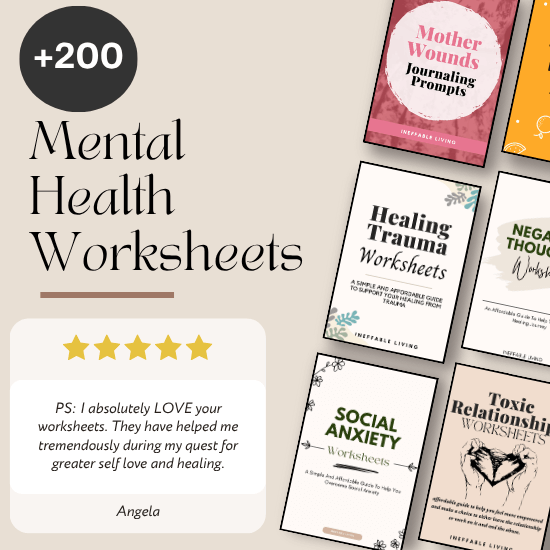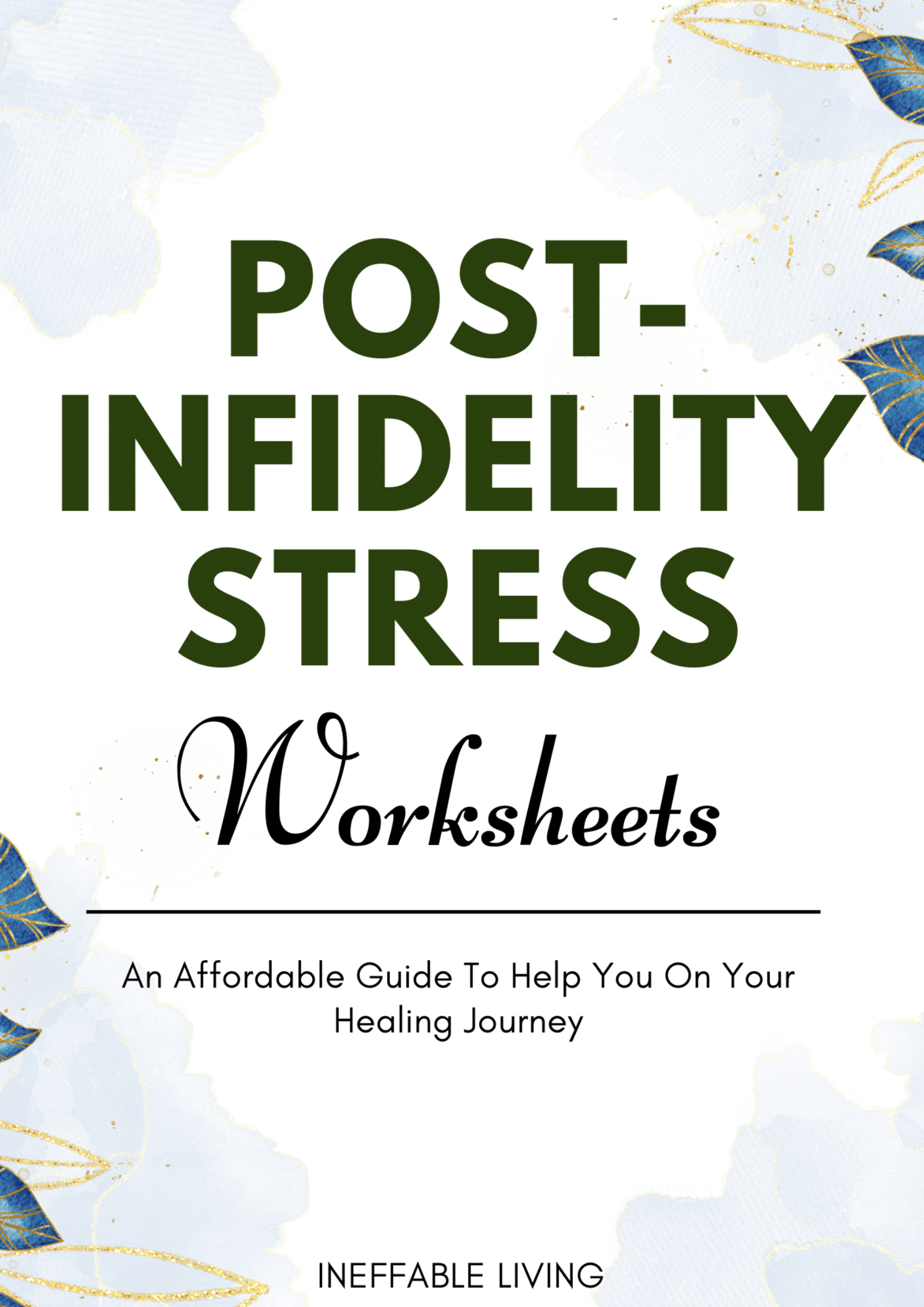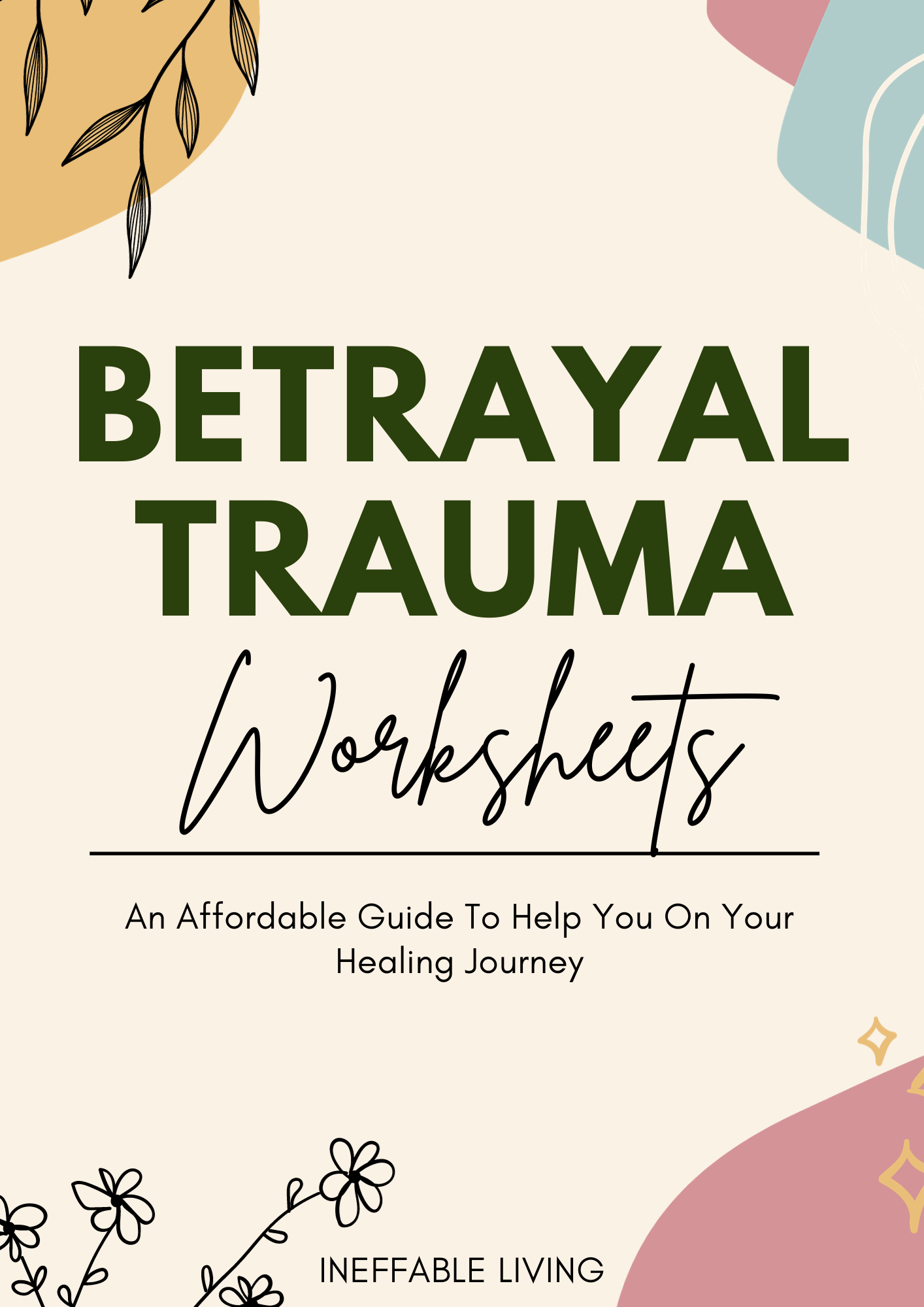Infidelity shatters trust in an instant — but the emotional wreckage it leaves behind can last for months or even years. Whether you’ve been betrayed or you’re working to repair a relationship after breaking trust, the pain runs deep. There’s confusion, anger, grief, guilt, and sometimes, a desperate need for answers that never come.
You don’t have to make sense of it all at once. These infidelity recovery worksheets are here to help you process what happened, untangle your emotions, and begin healing — whatever direction you choose.
Why Infidelity Pain Hurts So Deeply
Betrayal isn’t just about the act — it’s about what it breaks:
- Trust
- Safety
- Self-worth
- Future plans
- Identity within the relationship
Infidelity often leads to emotional chaos: obsessive thoughts, rage, intense sadness, and the unbearable question — “Was I not enough?” These feelings are real, valid, and deserve space to be acknowledged.
1. Post Infidelity Stress Disorder Worksheets
Process the emotional chaos after betrayal — from intrusive thoughts to shattered trust — with grounding tools for clarity, safety, and self-worth.
2. Abandonment Worksheets
Heal the deep wounds of feeling left, discarded, or replaced, and begin rebuilding security within yourself.
3. Betrayal Trauma Worksheets
Work through the trauma of being deceived by someone close with compassionate prompts that validate your pain and support emotional repair.
These Worksheets Are for You If…
- You’re trying to process betrayal but don’t know where to start
- You’re stuck in a cycle of anger, doubt, and self-blame
- You want to heal whether or not the relationship survives
- You’re seeking clarity and emotional stability
- You need space to reflect without pressure, shame, or outside opinions
Whether you’re grieving the relationship or working to rebuild it, your healing matters — and you don’t have to navigate it alone.
You Can Heal — No Matter What Happens Next
You may not have chosen the betrayal, but you can choose how you heal. These worksheets are your companion in a time of emotional chaos — helping you process the past, care for your present, and shape your future with strength and self-respect.

Read Testimonials –> HERE
FAQs
Can I use the worksheets with my therapy clients?
Absolutely! The worksheets are meant for both, personal and professional use.
The worksheets are copyrighted so you can’t resell them or upload them publicly online. But you can share them with your clients.
Can I make changes to the files before handing them down to my clients?
Absolutely! You can convert your PDF files to word documents and make changes using free tools like pdf2doc.com.
How do I know if these worksheets are right for me?
These worksheets are perfect for anyone who needs an affordable, yet effective strategies to help them increase their self-awareness and work on their own issues – alone or with their therapist.
These worksheets are not a one-size-fits-all approach and are in no way meant to imply that change is as one-dimensional as a worksheet.
So choose the techniques and suggestions that apply to you and tailor the exercises in ways that will be helpful to you.
Can I use these worksheets on my own or should I seek professional guidance?
These worksheets are designed to be helpful on their own. However, seeking professional guidance from a mental health professional can increase their effectiveness.
How do I use mental health worksheets effectively?
1. Set aside dedicated time: Find a quiet and comfortable space where you can focus on yourself without distractions. Treat this as valuable self-care time, just like you would for any other important appointment.
2. Choose the right worksheet: There are numerous worksheets available, each offering unique exercises and prompts. Consider your specific needs and goals. Are you looking to enhance self-awareness, manage stress, or improve your relationships? Select a worksheet that aligns with your current focus.
3. Read instructions carefully: Take a moment to fully understand the purpose and instructions of the worksheet. Clarify any questions you may have before proceeding.
4. Engage in self-reflection: Set pen to paper and let your thoughts flow. Don’t worry about perfection or judgment – this is your private space to express yourself authentically. Be honest with yourself and explore your emotions, thoughts, and experiences without restraint.
5. Reflect on your insights: After completing the worksheet, take some time to reflect on what you have learned about yourself. Consider any patterns or triggers that impact your mental well-being. Identify areas where you can implement positive changes or coping strategies.
6. Incorporate your insights into daily life: The true value of mental health worksheets lies in applying your newfound awareness and insights to your everyday life. Consider how you can integrate these insights into your relationships, self-care routines, and overall well-being.
When should I see a therapist?
These worksheets are designed to help you better understand yourself, your distress, and your difficulties.
You can use it in conjunction with therapy or as a stand-alone guide to manage your distress.
These worksheets can be considered a low-intensity intervention. They’re perfect for those who are struggling with mild to moderate issues.
In mental health, mild to moderate symptoms are those that are severe enough to be distressing to you, but moderate enough that you can still manage most of your daily activities.
If you feel very overwhelmed by any of the exercises in these worksheets, this might be a sign that your symptoms are too severe for you to do the work by yourself.
A therapist will help you at your own pace and provide support and encouragement throughout the process.
Do you have more questions? Check this page –> FAQs


